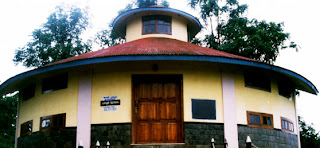Winter Palace, St. Petersburg, Russia
History
From the 1760s onwards the Winter Palace was the main residence of
the Russian Tsars. Magnificently located on the bank of the Neva River,
this Baroque-style palace is perhaps St. Petersburg’s most impressive
attraction. Many visitors also know it as the main building of the
Hermitage Museum. The green-and-white three-storey palace is a marvel of
Baroque architecture and boasts 1,786 doors, 1,945 windows and 1,057
elegantly and lavishly decorated halls and rooms, many of which are open
to the public.
The Winter Palace was built between 1754 and 1762 for Empress
Elizabeth, the daughter of Peter the Great. Unfortunately, Elizabeth
died before the palace’s completion and only Catherine the Great
and her successors were able to enjoy the sumptuous interiors of
Elizabeth’s home. Many of the palace’s impressive interiors have been
remodeled since then, particularly after 1837, when a huge fire
destroyed most of the building. Today the Winter Palace, together with
four more buildings arranged side by side along the river embankment,
houses the extensive collections of the Hermitage. The Hermitage Museum
is the largest art gallery in Russia and is among the largest and most
respected art museums in the world.
The museum was founded in 1764 when Catherine the Great purchased a
collection of 255 paintings from the German city of Berlin. Today, the
Hermitage boasts over 2.7 million exhibits and displays a diverse range
of art and artifacts from all over the world and from throughout history
(from Ancient Egypt to the early 20
th century Europe). The
Hermitage’s collections include works by Leonardo da Vinci,
Michelangelo, Raphael and Titian, a unique collection of Rembrandts and
Rubens, many French Impressionist works by Renoir, Cezanne, Manet, Monet
and Pissarro, numerous canvasses by Van Gogh, Matisse, Gaugin and
several sculptures by Rodin. The collection is both enormous and diverse
and is an essential stop for all those interested in art and history.
The experts say that if you were to spend a minute looking at each
exhibit on display in the Hermitage, you would need 11 years before
you’d seen them all. However, we recommend you opt for a guided tour
instead!














